How We Got Here: A Brief History of the Alumni Association
May 29, 2018 | By Anne Kniggendorf (SF97)
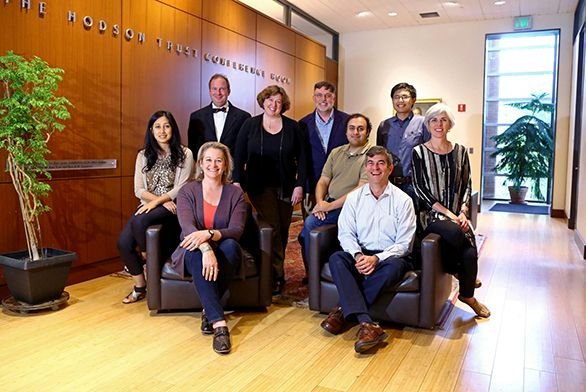
Once a student signs the St. John’s College register on convocation day, he or she is officially part of the college’s community. Similarly, on the day a student graduates, he or she becomes a member of the St. John’s College Alumni Association.
No one pays membership dues to be a part of the association, so some may not know they’re members. An Alumni Association board governs the association, which is made up of working groups that focus on the St. John’s experience for students or alumni in specific ways.
Any Johnnie can participate in the work the association and its working groups do.
However, since its formation in 1827 by Francis Scott Key, the St. John’s College Alumni Association has repeatedly changed form and function, a combined effort of many alumni and college staff members.
This important evolution has little to do with individuals, but hinged on key turning points as described by just a few of the people who were integral. Today, it is entering a new phase of activism and perhaps its first phase of real influence at the college.
“This is an exciting time for our alumni and the association,” says Phelosha Collaros, past president of the Alumni Association and current Vice President of Development and Alumni Relations. “They are actively influencing college decision-making at a number of levels, and bringing the very valid concerns of alumni directly to our presidents. They want to be heard, and they are succeeding on that front.”
The Beginning
Allan Hoffman (A49) is an emeritus member of the Alumni Association board and an honorary member of the Board of Visitors and Governors. He earned both designations after decades of service to the college and those titles aren’t just for show.
“What honoraries and emeriti have is the institutional memory,” he says. “It’s important that boards of institutions like St. John’s or its Alumni Association have some people who are familiar with the history. It keeps them from reinventing the wheel.”
He didn’t set out to be as active as he eventually became. He simply wanted to see his friends at homecoming—he attended his 10-year reunion, but no one else from his class of 34 graduates did.
So, before his 25-year homecoming in 1974, he knew that if he wanted to see anyone, he’d have to make some calls. He and his buddy Jonathan “Jake” Brooks split the country—Brooks called alumni west of Ohio, and Hoffman called everyone east of Ohio.
That year, attendance was so high the banquet had to be moved to a hotel.
But why had attendance ever been sparse?
Hoffman explains that to understand the genesis of the Alumni Association, one must look back to the transitional years, starting in 1937, when Stringfellow Barr and Scott Buchanan introduced the New Program.
Though as a student he knew Barr and Buchanan, and was there just after the transition, Hoffman says his understanding of the change was greatly helped by J. Winfree Smith’s book A Search for the Liberal College: The Beginning of the St. John’s Program.
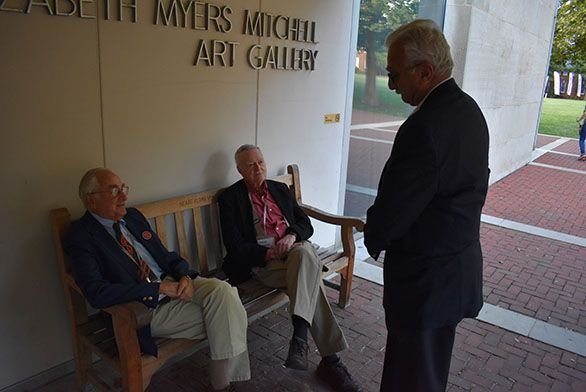
The college had lost its accreditation and was nearly bankrupt. So, beginning in the 1937-38 school year, Barr and Buchanan, scholars from the University of Chicago’s Committee on the Liberal Arts, instituted a program they and others had been conceptually developing for nearly two decades.
The New Program wasn’t meant to be radical, rather a return not only to the college’s original charter as described in the first New Program catalogue, but to education as it had been before Harvard University began offering electives to students at the end of the 19th century.
Still, Johnnies who’d begun under the old program, as well as alumni of the old program, were very unhappy to lose their intercollegiate sports, fraternities, many of their classmates, and the professors they revered who did not wish to learn how to become tutors.
Hoffman says, “We had many disgruntled alumni. That’s akin to original sin. That’s where we’re starting.”
It wasn’t until 1942 that all old programmers had completely left St. John’s. Few, if any, supported the college through gifts of time or treasure. This left the college without a strong alumni base to rely on.
In 1939 Life magazine ran an article on the college, which caused an enrollment boom, but since St. John’s was still all male, World War II’s draft swept away most of the student body before they could finish. The college tried taking in 15-year-olds to beef up enrollment in about 1943, which helped a little. Then, finally, women were admitted in 1951, instantly doubling the applicant pool.
Even so, by 1951 the college had next to no alumni support. By this time Richard Weigle was the president. It is Hoffman’s perspective that Weigle, who served for 32 years, ascribed to the viewpoint that the college should only support alumni who were supporting the college. He also recalls that Weigle seemed to materialize at every gathering of more than 10 alumni—such as an alumni seminar in New York that Hoffman had asked Barr to lead—to talk about the college and ask for donations.
While Weigle was very effective at raising money from outside sources, alumni resented the constant requests.
Prior to Hoffman’s homecoming “coup” in 1974, he hadn’t known of the Alumni Association’s existence. Once he investigated, he also learned an Alumni Association board was actively meeting on Tuesday evenings in Annapolis.
He discovered that, according to the board’s bylaws, presidents of chartered alumni chapters were automatically members of the board—but at that time hardly any chartered chapters existed outside of Annapolis, Baltimore, Washington D.C., New York, and Boston.
Because of the meeting’s timeslot and location, only people near the Annapolis campus attended the meetings. Hoffman attended a few and came away unimpressed.
“They rarely had a quorum by their own rules,” Hoffman says.
So, around 1980, he and some friends shook things up.
Hoffman encouraged friends in cities farther west to start alumni chapters that were officially chartered by the college. Each chapter head became a board member. Eventually the new chapter heads outnumbered members of the Tuesday-night group.
A group of representatives of both campuses rewrote the bylaws. Hoffman calls it an “internal revolution.”
Only the old Alumni Association board president and one of his allies voted no to the reorganization, which also expanded the association to include Santa Fe alumni.
“There was a confluence of things. You had the first 10th-year class of Santa Fe maturing. You had Dick Weigle retired, and Ed Delattre in,” Hoffman says. “And on the BVG (Board of Visitors and Governors) I became the chairman of the alumni relations committee.”
One of the first points all parties agreed on, including Delattre, was that when alumni were gathered, no one should attempt to raise money.
“Bifurcation was necessary at the time to dispel the notion that the only thing the college was interested in was the alumni pocketbook,” Hoffman explains.
When, who, and how money should be raised has remained a difficult balancing act for the alumni association and the college. But in the early 1980s the college didn’t share funds and, says Hoffman, the Santa Fe and Annapolis campuses couldn’t even agree on common stationery. He conducted the first consolidated alumni fundraising drive, and by the second year the stationery matched.
The Alumni Association was also collecting regular dues from alumni, which were used for homecoming events and even alumni trips abroad. Eventually, the alumni board decided that these dues were confusing alumni who felt that they had been giving money to the college, when in fact, the money had only been for the alumni association. The college still wanted donations and needed support.
An unhealthy schism existed between the Alumni Association and the college, though the Alumni Association was robust at this point.
By the late 1990s and early 2000s, as Hoffman became less involved, the college continued to struggle with how to balance alumni relationships with the college as well as how to raise money. He points out that it takes many years to build a good relationship between a college and its alumni, but warns that the relationship can be destroyed in just a tenth of the time.
New Life
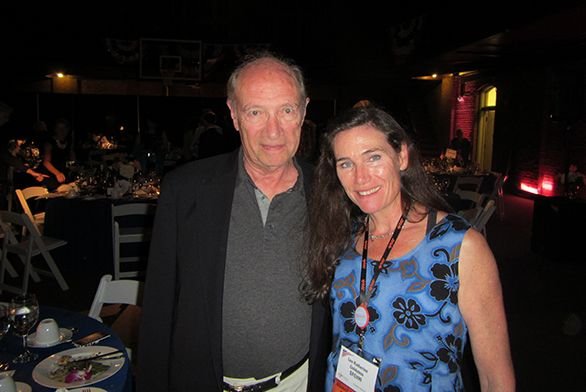
Lee Katherine Goldstein (SFGI90) has Johnnie leadership in her blood. Her father, Harvey Goldstein (A59) was an Alumni Association board president. He and Goldstein’s stepmother, Mary Bittner Goldstein (A58), both served on the BVG as well.
About 10 years after graduating, Goldstein became involved with the Denver/Boulder alumni chapter. When an email went out to all members of that chapter that they needed a new president, Goldstein felt comfortable stepping into that role.
She served on various committees, and as a chapter president she was one of about 30 members of the Alumni Association board.
Goldstein was not alone in noticing that 30 Johnnies trying to run three two-day meetings every year—all wanting their turn to ask questions and throw in their ideas—was too many to accomplish anything.
By 2008, active alumni decided it was time for another major change in the way the Alumni Association and its board operated. So, an alumni task force composed of eight alumni and three staff members was created to look at the structure of the board and alumni relations.
While they were at it, they also looked at alumni giving. It was lower than the task force expected.
“For the amount of love that alumni have for the college, our giving rates didn’t reflect that,” Goldstein says.
Was it time to end the bifurcation that Hoffman described?
“The alumni board kind of felt that it was their job to protect alumni from (fundraising),” Goldstein explains. “They made it verboten for the alumni board to engage in any assistance in increasing gifts to the college.”
But that had created a disconnect. In 2009, the answer to mend the disconnect was to bring the separate giving volunteer structure Philanthropia into the association as the Alumni Giving Council.
Another major change was that chapter presidents would no longer be de facto board members. Additionally, the president would not serve a six-year term, but the position would be divided into three consecutive two-year positions: president-elect, president, and past-president. The board also included a secretary, a treasurer, and 12 at-large directors.
The board and task force developed working groups that over time have developed into: Alumni Giving Council; Chapters; Career Services; Strategic Communications; Events; Student and Recent Alumni; and Alumni Leadership Forum.
Steven Thomas (SF74) recalled that making these changes was not easy.
“As a member of the alumni task force and as the president of the Alumni Association at the time we changed the basic structure, I was proud to lead these basic structural changes. Even though many folks were opposed to those changes," he says.
After Goldstein became the Alumni Association board president in 2010, the group rewrote the bylaws again.
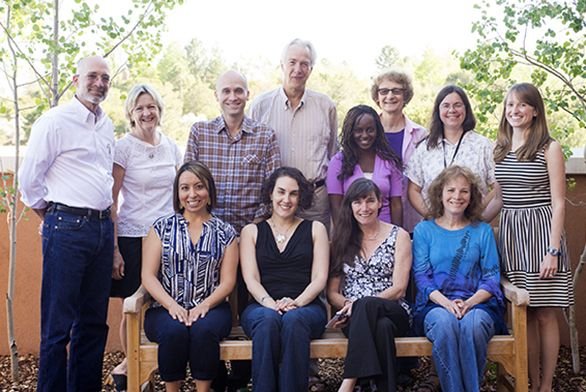
Though the Alumni Association was strong compared to when Hoffman’s involvement began, two things were still out of whack: the relationship that the Alumni Association had with the college, and that too few alumni seemed to know that they were welcome to participate (a problem that persists to this day).
“Our goal was to create more of a partnership between the alumni association and the college,” Goldstein says. “Not just in the area of giving, though that was certainly part of. We were really trying to partner with the college.”
Onward
Adrian Trevisan (A84) will serve as past-president until 2019. He became acting president in 2013 once the dust had completely settled from the 2010 alumni association board revamp.
He says the board’s recent focus has been on spreading the word about the alumni association as being all-inclusive and in need of participants. He sees alumni as still pretty disengaged. Most chapters report consistent attendance by only a small group of alumni—Trevisan estimates the total being between 5 percent and 10 percent—while most alumni do not participate at all. This makes for a narrow pipeline into leadership roles.
One way that the Alumni Association has tried to widen that pipeline and make more alumni aware of what’s happening at the college was by creating the Alumni Leadership Forum (ALF). ALF took place on alternating campuses through 2017—moving forward the plan will be to hold some of its events regionally, and some during homecoming. It also created the Student and Recent Alumni Working Group to figure out what recent graduates want from the association and how to provide it to them.
Trevisan says that ideally alumni are involved with the college through chapter events, but not every city has a chapter. Alumni Relations Office records show that many chapters offer only seminars—and not everyone wants seminar. A 2014 survey of alumni showed that only 60 percent of respondents were interested in attending a seminar chapter meeting, and Trevisan believes that people’s interests change over time. For instance, younger alumni in graduate school with small children might be more interested in chapter activities that require little preparation, and when the job situation is more solid and the kids are older (allowing time to read), seminars might be more interesting. He’s been encouraging chapters to tackle some of the projects that working groups are taking on, like helping career services or admissions. However, he knows that, too, might not be a big draw, in which case he encourages tasting wines by Johnnie winemakers, white water rafting or happy hours. Just anything that allows people to gather happily.
Many Johnnies who are aware of the Alumni Association and its board wonder how people are elected to fill the seats and chair positions. Trevisan understands that the annual “elections” sometimes seem like friends selecting friends for spots.
“We’re not like a municipality,” he explains. “It’s not a political election where you’ve got three seats on the municipal council and you’ve got six or seven candidates. We’re like a corporation. The way those work is the board says, ‘Here are people we think ought to be on the board,’ and the shareholders say either ‘We agree with you and we vote for your slate,’ or there’s some activist investor out there who says: ‘No. you guys are clowns and I want a seat on the board so I can steer things right.’
“Similarly, the way the polity is set up is that the board says ‘Here are the people we recommend you elect as directors and president and the BVG member,’ and either the alumni agree with that or they have a pretty low threshold (25 signature on a petition) to say ‘No, here’s somebody we want instead.’”
A nominating committee oversees the nominations for the various roles and is headed by the Alumni Association board’s president-elect. It consists of the other two presidents (past and present), the director of alumni relations, three alumni at-large, and an alum-tutor from each campus.
Nominating committee membership lasts one year, but people are welcome to stay on for more than one. Each year they have to fill six of the at-large director positions, and one year they fill the secretary and treasurer positions, the other year they’ll fill the president-elect position. Finding candidates for all these positions is difficult, Trevisan says.
An ideal candidate for any position is an alum who has gotten to know how the college works and has volunteered to help with something, just anything, that demonstrates ability to make the time commitment. The presidential track is particularly time-consuming. The six-year commitment is divided into three successive two-year roles (president-elect, president, past-president). All of these board positions entail three meetings per year (alternating campuses), which the person has to pay for out of pocket.
Presidents are also ex officio members of the BVG and must attend the three annual BVG meetings to represent the alumni. So, that’s six meetings a year for two years for the president—no expenses paid.
But not every job is this time-intensive. Trevisan wants alumni to know that whatever their interest and however much time they’re able to give, a job exists for them. The working groups of the board welcome volunteers and the time commitment is generally a few hours per month, unless a special event is planned. It’s just a matter of contacting a board member or the head of a working group to find a good fit. It may also require a little bit of persistence: the officers and directors want to engage with as many alumni as possible. Given the working group activities, along with their own fulltime jobs, members of the alumni board occasionally need a reminder to respond to inquiries
As for fundraising, Trevisan says that he sees the board’s job as getting people engaged so they want to become involved in the college.
He points out that there are a lot of things alumni can do that don’t involve money at all and have as much impact.
“It strikes me that if you’re looking at a college, a lot of the reputation is going to be built on alumni, you’re going to wonder if you can get a job afterwards and you’re going to look at alumni. There’s a lot an engaged alumni body can do that doesn’t involve money, it just involves sweat equity,” Trevisan says.
“Hopefully as people get involved and see what’s going on they’ll then say I remember why I love St. John’s and they’ll want to write a check without being asked.”
Looking Ahead
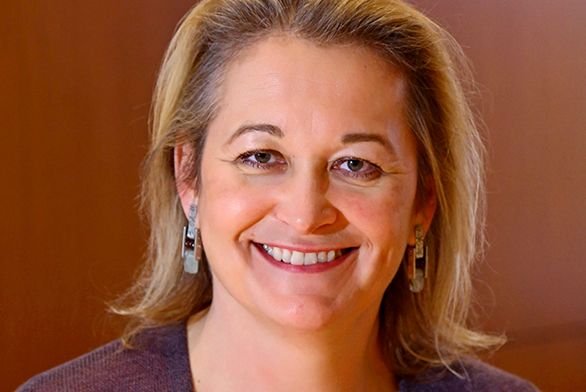
Tia Pausic (A86) is the current Alumni Association board president. She agrees with Trevisan that alumni time and treasure will most help the college going forward.
She watches alumni interactions on Facebook and has two concerns. The first is that while it’s great to see alumni so active, engagement on social media doesn’t quite equate with time given to the college.
Someone may devote hours on social media debating the axolotl versus the platypus, cogitating over a Nietzsche reading, or ranting about the administration. And Pausic concedes that all of that has value because it shows that people care and demonstrates what’s on alumni minds. However, it does not yield the same results as volunteering at a college fair.
And treasure-wise, of the nearly 7,400 alumni of record, fewer than 1,400 donated money in 2017. Watching social media, she’s come to the conclusion that a lot of alumni are overthinking giving.
“They’re thinking the administrative cost to process my 10-dollar check cancels out the donation, so I’m just not going to bother.” She says that’s the wrong way to think about it because it doesn’t cost much at all to deposit a check and turn out a thank-you note.
“If we don’t get that 10 dollars it’s actually going to be more harmful to the college because the participation rate will remain stagnant, and we’re going to have to look for that funding elsewhere,” Pausic says.
Ultimately, she points out, all of the small gifts add up and they become part of the endowment that creates scholarships for students to go to the school, reserves campus maintenance, and pay for tutors. Pausic notes, “Rather than focusing on what your individual gift might mean, consider that you’re contributing to a larger effort. It’s like being around the seminar table, building up an understanding of the reading.”
Pausic adds that assisting the college with fund-raising is only one of many of the association’s activities, and not the most important one. According to its charter, the objective of the association is “To maintain and perpetuate the interest of members of the Corporation in St. John's College and in its associations and friendships which were formed during their student life,” and that’s where most of the effort goes. “We have one working group that helps with fund-raising, and eight that work on bringing Johnnies together to help each other,” she noted.
These days, the college and the Alumni Association board have a strong relationship. Pausic says, “We try to align our strategic plan with what the needs of the college are.” They’re no longer working against each other.
Alumni are, and will continue to be, central to the continued success of that relationship and of the college moving forward.
“The Alumni Association is here to provide and to catalyze the development of services for alumni, whether at the chapter level or coming from the college or from the alumni association itself as much as possible,” Pausic says.
“Alumni are really the life’s blood of the college in terms of outreach to other people, in terms of spreading word about the college, the Program and what our education means.”
This story has been updated to include additional information.

